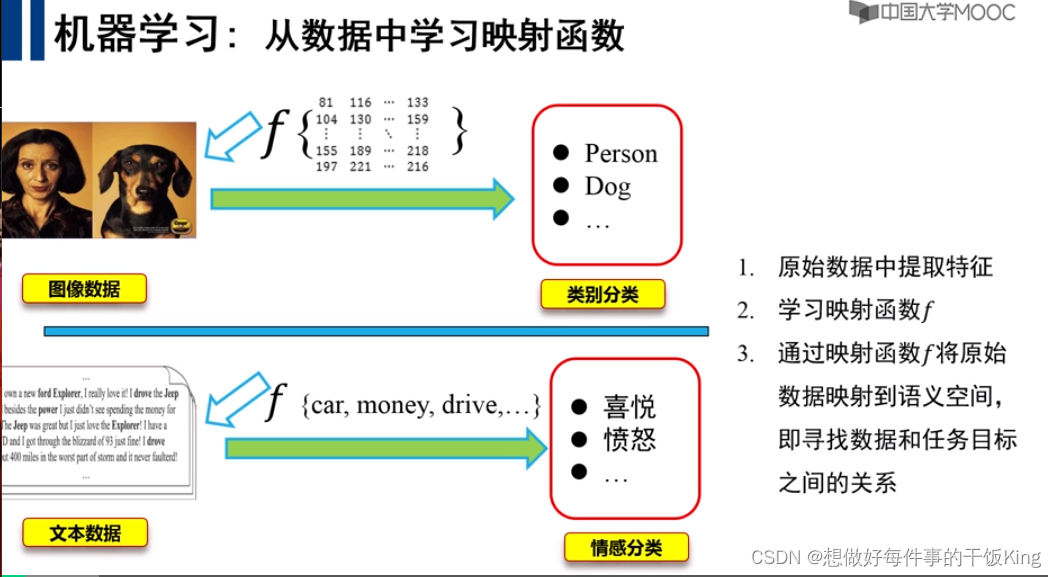聚类分析在机器学习中的作用与挑战:全面解读与应对策略
发布时间: 2024-09-07 13:27:40 阅读量: 164 订阅数: 83 


机器学习与算法及源码:聚类分析.zip

# 1. 聚类分析的理论基础
聚类分析是数据挖掘中的一种重要技术,旨在将数据集中的样本划分为若干个类别,使得同一类中的样本相似度较高,而不同类的样本相似度较低。本章将从聚类的定义和类型出发,详细介绍聚类分析的理论基础。
## 1.1 聚类分析的定义和类型
聚类分析,又称为群集分析,是通过分析数据的内部结构,将相似的数据点聚集到一起的一种无监督学习方法。它的核心是根据数据之间的相似性(或距离)将它们分组成不同的群集。聚类分析的类型主要分为硬聚类和软聚类。硬聚类中,每个数据点只属于一个聚类,例如K-means算法;软聚类则允许一个数据点属于多个聚类,具有一定的隶属度,比如模糊C均值算法。
## 1.2 聚类分析的应用场景
聚类分析广泛应用于多个领域,包括市场细分、社交网络分析、图像分割、生物学分类等。例如,在市场分析中,聚类可以帮助企业识别不同的客户群体,为精准营销提供基础;在生物学中,聚类可用于组织各类生物样本,理解物种的演化关系。
## 1.3 聚类分析的评价指标
聚类分析的效果通常通过聚类的内部和外部指标来评估。内部指标如轮廓系数可以衡量样本与其所在聚类的紧密程度及与其他聚类的分离程度;外部指标如Rand Index则需要预先给定数据的“真实”分类,评价聚类结果与“真实”分类的一致性。通过这些指标,研究人员可以对聚类算法进行比较和优化。
# 2. 聚类算法的深入探讨
聚类分析是数据挖掘中的一项核心任务,它试图将一组样本根据某些特征划分为若干个类别(或称为簇),使得同一类别中的样本相似度高,而不同类别中的样本相似度低。随着应用场景的复杂化和技术的发展,对聚类算法的研究愈发深入,产生了多种不同的聚类技术。本章节将深入探讨层次聚类方法、部分聚类方法以及高维聚类面临的挑战和策略。
## 2.1 层次聚类方法
层次聚类方法试图根据数据点之间的相似度构建一个层次的分解,最终形成一个数据点的树状结构(即层次结构)。层次聚类可以分为凝聚方法和分裂方法。
### 2.1.1 聚类的基本思想和过程
层次聚类首先将每个数据点视作一个单独的簇,然后逐步地按照某种策略合并簇,直到所有的数据点都被合并到一个簇为止,或者达到预先设定的簇的数量为止。合并的标准通常基于簇之间最不相似的成员之间的距离,例如使用最短距离法(Single Linkage)或最长距离法(Complete Linkage)。
### 2.1.2 聚类中的距离度量
距离度量是决定层次聚类效果的关键因素之一。常见的距离度量方法包括欧几里得距离、曼哈顿距离、杰卡德距离和余弦相似度等。每种度量方法对于数据空间中的距离有不同的解释,因此在实际应用中需要根据数据特性选择合适的度量方法。
### 2.1.3 层次聚类的算法实现
层次聚类算法的实现流程如下:
1. 初始化:假设每个数据点自身就是一个簇。
2. 计算距离:计算所有簇对之间的距离。
3. 合并簇:根据距离度量和合并策略,找出距离最近的簇对并合并。
4. 更新距离矩阵:更新合并后的簇距离矩阵。
5. 重复步骤2到4,直到达到预定的簇数量或所有数据点合并为一个簇。
```python
from scipy.cluster.hierarchy import dendrogram, linkage, fcluster
import matplotlib.pyplot as plt
# 示例数据集
data = [[x_i] for x_i in range(10)]
# 计算层次聚类
Z = linkage(data, method='single')
# 绘制树状图
plt.figure(figsize=(25, 10))
plt.title('Hierarchical Clustering Dendrogram')
dendrogram(Z, labels=data)
plt.show()
# 根据预设的簇数量进行划分
clusters = fcluster(Z, t=3, criterion='maxclust')
print(clusters)
```
## 2.2 部分聚类方法
部分聚类方法,如K-means和密度聚类,相较于层次聚类在处理大数据集时具有更高的效率。它们通常会预先设定簇的数量,然后迭代地寻找最佳的聚类结果。
### 2.2.1 K-means算法原理与优化
K-means算法是最常用的部分聚类方法之一。它的核心思想是:首先随机选取K个数据点作为初始簇中心,然后按照最近邻原则将每个数据点分配到最近的簇中心,最后计算每个簇内所有点的均值,更新簇中心。重复上述过程直到满足收敛条件。
```python
from sklearn.cluster import KMeans
import numpy as np
# 示例数据集
X = np.array([[1, 2], [1, 4], [1, 0],
[10, 2], [10, 4], [10, 0]])
# K-means算法实现
kmeans = KMeans(n_clusters=2, random_state=0).fit(X)
labels = kmeans.labels_
centroids = kmeans.cluster_centers_
print(labels)
print(centroids)
```
在实际应用中,K-means算法有许多优化策略,例如:K-means++选择初始中心、使用不同的距离度量以及尝试不同的初始中心等等。此外,K-means对于初始中心的选取非常敏感,不同的初始中心可能导致结果的巨大差异。
### 2.2.2 密度聚类的原理与应用
密度聚类算法,如DBSCAN(Density-Based Spatial Clustering of Applications with Noise),依据数据点的邻域密度来进行聚类。在DBSCAN中,核心点是被其他点密集包围的点;边界点是指在核心点邻域内,但同时也在稀疏区域的点;噪声点则不被任何核心点的邻域包含。
```python
from sklearn.cluster import DBSCAN
from sklearn.datasets import make_moons
import matplotlib.pyplot as plt
# 生成示例数据集
X, _ = make_moons(n_samples=300, noise=0.05, random_state=42)
# DBSCAN聚类实现
dbscan = DBSCAN(eps=0.2, min_samples=5).fit(X)
labels = dbscan.labels_
# 绘制结果
plt.scatter(X[:, 0], X[:, 1], c=labels, cmap='viridis', marker='o')
plt.title('DBSCAN Clustering')
plt.show()
```
### 2.2.3 模型和基于图的聚类技术
模型聚类方法,如Gaussian Mixture Model(GMM),通过假设簇服从某种分布(如正态分布),然后根据概率密度来分配簇。基于图的聚类技术将数据点映射到图结构上,然后通过图划分来实现聚类。
## 2.3 高维聚类挑战与策略
在处理高维数据时,传统的聚类算法往往会遇到效率低和性能下降的问题,这是因为高维空间的稀疏性和距离度量失效等问题导致的。
### 2.3.1 高维空间数据的聚类问题
高维数据通常会导致距离度量失效,
0
0





